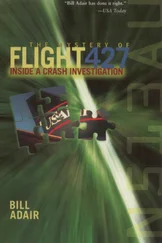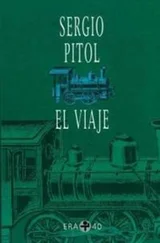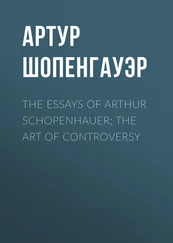Suddenly, I feel that everything that Paz and I have seen today are but pieces of the same puzzle. Foreigners in San Cristóbal with their bulky film equipment, the church of San Juan Chamula, the ceremony witnessed in Zinacantán, the Subcomandante’s invisible presence in the air, the indigenous mass that has come to San Cristóbal, fleeing the bombings, the Indians who surround the cathedral in vigil for their bishop are but particles, all of them fragments of the same phenomenon, water from the same river, moments from the same time.
III. FROM THEN UNTIL NOW
I left that day infected by the negotiating climate that existed in San Cristóbal. And, indeed, the meeting between the government representatives and the Zapatista Army of National Liberation took place shortly after in the city’s cathedral. There were three protagonists: Manuel Camacho Solís, Bishop Samuel Ruiz, and Subcomandante Marcos. Mexico watched in fascination as the Zapatista delegation entered and exited the cathedral. The ski masks covering their faces and the rifles and bandoliers strapped to their chests added intensity to the epic story. These were scenes that took us back seventy years or more, to the time of Zapata and Villa, whom we only knew from the movies, and not to one when treaties are signed today by attorneys in suit and tie. The Subcomandante was playing his cards for the second time. The tragic engine was granting him the force needed to fulfill his destiny, as it had done the first of January of that year. The image of the Subcomandante rose dramatically among both his admirers and his detractors. No one knew anything about him save his eyes, hands, and pipe.
The drive to engage in dialogue decreased suddenly, and did so in a dramatic fashion. Camacho Solís was replaced by gray, irrelevant characters — second- or third-rate bureaucrats. His lack of imagination complemented the superior orders perfectly. It had become necessary to bog down the dialogue.
The designs of power are always difficult to pin down. Politicians speak of peace as the only way to resolve the Chiapas conflict, but they also allow the growth of the paramilitary guardias blancas , encourage the most virulent racist groups, especially the coletos in San Cristóbal, harass the supporters of Zapatista Army, co-opt anyone they can, intensify the smear campaigns against the Subcomandante and the Bishop of San Cristóbal. Those campaigns are carried out without many successes, rather with setbacks. Because as time goes by — from the beginning of the uprising until today two and a half years have passed! — the Zapatista rebellion has acquired characteristics of both gale and spring; it has toppled gigantic fallacies, and has shown a vitality, a moral strength, and an admirable political imagination. It owes its existence still to these virtues.
The armed rebellion having just emerged, its leaders are already noticing that the struggle should be fought more in the media than on the battlefield. Marcos’s capabilities, his imagination, speed, humor, have allowed his figure to be taken seriously beyond our borders. Just a few months after his appearance as the Subcomandante of the Zapatista Army, Marcos announced that his destiny and that of his troops should be placed in the hands of civil society, ceding to it all his triumphs and attributes. It was civil society that should grow and take the great strides that would lead the country toward democracy. The action of civil society would cause the insurgent army to forfeit its raison d’être . The Convention of Aguascalientes, in the Chiapas jungle, in Marcos’s keynote speech, urged parties to the convention to move in that direction: “Fight to make us unnecessary, to eliminate us as alternatives!” And he insisted in the end: “Fight relentlessly. Fight and defeat the government. Struggle and defeat us!”
His thinking is fundamentally democratic. And prominent foreign figures saw that sooner than those in Mexico. On 2 March 1995, in La Jornada a letter was published signed by some prestigious Italian intellectuals, among them Norberto Bobbio and Michelangelo Bovero. Allow me to quote one paragraph:
The Zapatista movement with its demands for democracy, freedom, and justice, its proposals for constitutional and anti-authoritarian reforms, and, above all, its surprisingly persuasive ability to communicate and disseminate them has surpassed the paradigms of the old Latin American guerrillas. Even as the dramatic option for armed insurrection, in January 1994, has raised and continues to raise distressing questions, it is clear that during the course of events the movement has been able to position itself as one of the principle actors in the process of democratic transition that appears to have produced a response in a broad plan of reforms. Thus, the neo-Zapatista movement, by contributing to the debate on the different path to democracy, has benefited recently from a spirit of solidarity that once again has countered an attempted military liquidation of the insurgents.
One of the official obsessions was to identify the Subcomandante and reveal his true face before the country. They achieved it. They believed that the virtual unmasking would destroy the figure, eliminate his epic halo. The fiasco was tremendous. They were sure that they had found a fossil with an appalling criminal record. On February 9, 1995, what appeared to be his real name and a photo of his prerevolutionary period were shown on television. Officials said the man was a criminal, a fugitive from justice, and therefore should be immediately arrested. The information that then appeared in the press played against the persecutors: the Subcomandante “turned out to be the son of businessmen, a Catholic school student, a brother of a former member of the PRI, philosophy student, decorated by President López Portillo for academic achievement, a student at the Sorbonne. His thesis adviser was the philosopher Cesáreo Morales, who became Luis Donaldo Colosio’s chief of staff,” writes Juan Villoro. “The government needed an ideological troglodyte, enrolled in some ‘frequent flyer’ program to North Korea, or a psychopath willing to use a power saw at the direction of Quentin Tarantino. Instead, it found the perfect son-brother-in-law-boyfriend for the Gran Familia Mexicana .”
For several weeks Proceso documented the celebrity’s life through testimonies from family, friends, fellow students, and teachers. A photo of him taken from an experimental film impresses me because of its Beckettian loneliness, as well as the fact that during his adolescence he acted in several plays, including, precisely, Waiting for Godot . Despite the reports, no one calls him by name, neither his supporters nor his enemies, neither the press nor TV, not even members of the government. He continues being Subcomandante Marcos for all purposes.
It has been two and a half years, and we have yet to enter the First World, quite the contrary. We have experienced a permanent economic crisis. As for politics, if we look at the PRI party family, we seem to be witnessing something akin to the end of the world. There have been high-profile murders, that of Luis Donaldo Colosio, candidate for president of the Republic, Francisco Ruiz Massieu, the leader of PRI, others. The pressures to prevent the truth from coming to light must be immense. Investigations seem like very complex, byzantine amusements that do not allow us to get to the bottom of anything. Crimes committed by leaders and officials, tried and proven, go unpunished. Corruption among the leadership during the previous administration and its relationship to drug trafficking and organized crime have become public knowledge. This collapse, this decline in social morality, favors the development of a civil society that has rendered a military solution in Chiapas impossible. One must remember that all the public demonstrations have been for peace and none in support of the armed path. Subcomandante Marcos and the Zapatistas understood this immediately. Now we have to achieve a just and worthy peace. Not only that: there is a desire to move toward a peaceful means and defend the causes they hold through political action. And the Subcomandante, “once granted, his glittering arms he will commend to rust / his barbed steeds to stables,” as a character says in Shakespeare’s Richard II .
Читать дальше












